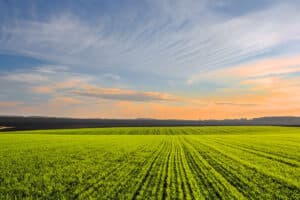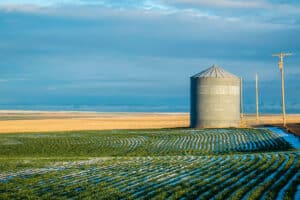During football season, we are bombarded with “analysts” telling us that the key to victory for one team or another is the offensive line, or “making plays,” or winning a match up, or controlling turnovers, or remembering that the “other team puts its pants on one leg at a time just like us.”
Only one factor determines a winner in football—which team scores the most points. One analyst summed up his insight into a game between two low-scoring NFL teams: “Points are going to count in this one.” Can’t quarrel with that. This commentator appears to be paid real dollars for his wisdom.
I’m not sure how the Harvard Business School would analyze land investing, but what I’ve seen over 40 years is that there is one factor that almost always determines the degree of success or failure: the buyer’s get-in price.
The longer land is held, the more likely it is that it will appreciate. But the net profit after all the carrying costs are counted in may not be as much as you might expect.
It is, of course, easy to offer advice like, “Don’t buy at the top of the market cycle.” (Which, by the way, is excellent advice.) Unfortunately, no one knows where the top is until it appears in the rear-view mirror. And the normal tendency for buyers in an up market is to assume that “up” will continue, so it’s hard not to buy high when higher appears to be the future. We are all subject to buying high in order not to be left out.
While I, too, believe that over the long term land prices must trend up owing to population growth, I also believe that within that long-term trend, dips will occur and some will take several years to shake out.
It’s also likely that certain types of land will lose a portion of their economic utility as technology changes. Coal properties, for example, will lose value if federal policy starts to back out coal as a utility steam fuel. Certain types of timberland could be devalued by a market shift away from particular finished products, such as newsprint. While new uses could create demand for those timber resources, a significant time lag could occur. Good-quality crop land may be overvalued owing to recent ethanol demand, but over time I think it should continue to be an inflation hedge because other crops can be grown on it if corn demand declines as a result of lower ethanol demand or a shift away from corn products in food.
Different types of land follow different valuation trends, because they are driven by their own markets. The fact that prime farmland has been appreciating doesn’t mean that marginal farmland will too, or that Maine timberland will go up. A land investor has to know how a particular property fits in its particular market.
This means he has to keep one eye on national (and even international trends), another eye on trends within the industry that affects the type of land he’s evaluating and, finally, a third eye on local factors, such as markets for the land’s products, zoning, neighbors and future developments that affect the parcel’s value, both negatively and positively. Land investments are affected by the most macro of factors as well as those factors that are entirely local and property-specific.
And when all is said and done, a low get-in price is the factor that both protects an investor against adverse trends and assures profitability.
The get-in price must be judged against the intrinsic value of the property’s immediate and long-term assets, not whether a sale price matches recent selling prices of comparable properties. When the get-in price is lower than the intrinsic asset valuation by at least 25 percent, the property is likely to be a good candidate for investment, other things being equal.
I’ve noticed a number of properties cutting their asking prices by 20 percent during the last month or two. This is a necessary market corrective, and buyers should be paying attention to this trend.
Get-in price to a land investor is not the final score, but it usually determines the degree of win or loss.
This content may not be used or reproduced in any manner whatsoever, in part or in whole, without written permission of LANDTHINK. Use of this content without permission is a violation of federal copyright law. The articles, posts, comments, opinions and information provided by LANDTHINK are for informational and research purposes only and DOES NOT substitute or coincide with the advice of an attorney, accountant, real estate broker or any other licensed real estate professional. LANDTHINK strongly advises visitors and readers to seek their own professional guidance and advice related to buying, investing in or selling real estate.









Land is not a product,you can not make more of it than what is there.Its value is determined by several factors.The value of the currency used and the land’s law an political philosophies about what you can do wih your land..
If you use the US dollar you know that the dollar is losing its value,and IF your land is not losing value,its price sould go up.Mind,I said “IF”.
If your Federal ,State and Municipal laws have a “say so” on your land ,you have to determine how much “say so” you have left of your property rights to determine what the real value of your land is.
If those laws and political philosophies have adopted Karl Marx’s theory that the”Big Brother” System is the way to take care of you, may I remind you that the Soviet Union collapsd from within using that system.If you say that I may not, you can repeat history.
well said! you are spot on! our country is floating in uncharted waters, without a change in direction, we will become a shipwreck! John